Ready for service after a decade of manufacturing
The U.S. Navy’s newest aircraft carrier, the USS Gerald R. Ford (CVN 78), will deploy in early May to sail for the first time with its full air wing and escort ships as a complete carrier strike group. This is a major milestone after years of problems that have delayed the ship and significantly increased its production costs.

The aircraft carrier USS Gerald R. Ford off the Atlantic Ocean on March 19. Photo: Business Insider
The USS Gerald Ford has "completely transitioned to an operational ship," said Capt. Brian Metcalf, program manager for the Gerald Ford-class aircraft carriers, at the “Sea, Air, Space” exhibition at National Harbor, Maryland, on April 4.
The USS Gerald Ford completed an “early deployment” in the fall of 2022 and has since conducted “very successful” training with aircraft carriers and other NATO navies. Earlier this month, the USS Gerald Ford completed a combined training exercise, which Metcalf said was “a graduation exercise for the ship to be formally deployed.”
The exercise, called COMPTUEX, is “a few weeks of working with the air force and the ships that the USS Gerald Ford will be deployed with. The US Navy will formally commission the USS Gerald Ford in the first week of May,” Metcalf said, adding that it will be a deployment lasting at least six months.
The exact route of the USS Gerald Ford carrier strike group is not yet known. But according to Lieutenant Commander Kristi Johnson, Deputy Director of Public Affairs for the US Navy's 2nd Fleet, the completion of COMPTUEX means that the ship is "ready to support US allies and partners anywhere in the world ", for all missions, including ensuring maritime security.
The ship is modern and expensive.
The USS Gerald Ford is the first new class of aircraft carrier since the USS Nimitz class entered service in 1975. The program to build this class of nuclear aircraft carrier has been stretched for a decade due to a series of problems with new technology that caused years of delays and pushed the cost up several billion dollars above the original estimate.
Among the most troubling new technologies on the USS Gerald Ford class are the “Electromagnetic Aircraft Launch System (EMALS), Advanced Arresting Gear (AAG), and Advanced Weapons Elevator (AWE) – all of which are supposed to be faster and more efficient than similar systems on older carriers.
The difficult integration process for these new technologies has led to public debate among shipbuilders, Navy officials, lawmakers and even former President Donald Trump, who has frequently criticized the Gerald Ford-class aircraft carrier's new design and hardware.
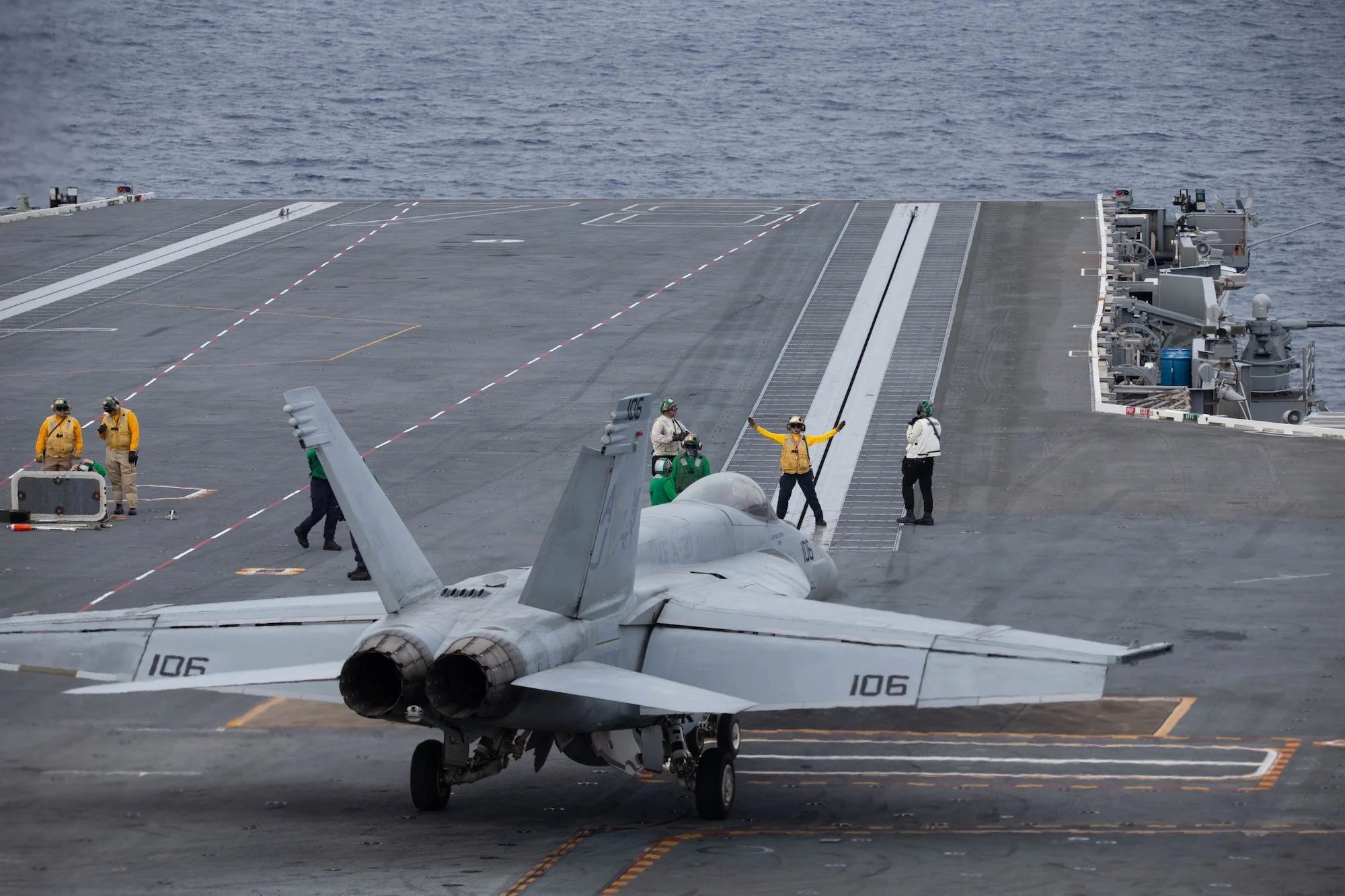
Airmen instruct an F/A-18E on the USS Gerald R. Ford. Photo: Business Insider
Admiral Michael Gilday, Chief of Naval Operations, also admitted in 2021 that the introduction of 23 new technologies to the USS Gerald Ford led to delays and increased the ship's cost by up to $13 billion.
However, Colonel Brian Metcalf, Director of the Gerald Ford-class aircraft carrier construction program, said that the electromagnetic aircraft launch system and advanced aircraft arresting equipment "are performing well" and "are becoming increasingly reliable" after launching and recovering 14,000 aircraft.
“On paper, the USS Gerald Ford’s combat systems are up to snuff,” said Capt. Metcalf. “The ship has achieved all the certifications necessary to deploy, and I have every confidence that the carrier and her strike group will be able to defend themselves.”
Of course, any assessment of the USS Gerald Ford will have to wait for actual combat operations. But in theory, compared to its predecessors in the Nimitz class, the US Navy's new $13 billion ship is superior in many ways.
Thanks to the highest level of automation, Gerald Ford-class ships only need about 4,300 personnel, of which 2,600 are crew members, much less than the 5,000 personnel of Nimitz-class ships.
The new Bechtel A1B reactor for the Gerald Ford class is smaller and simpler, but still much more powerful than the Nimitz-class A4W reactor. The two nuclear reactors installed on each Gerald Ford-class carrier will provide at least 25 percent more electrical power than the 550 MW of the two A4W reactors on the Nimitz-class. The extra power will enable the ship to operate electromagnetic armor systems and laser guns.
The Electromagnetic Aircraft Launch System (EMALS) installed on the USS Gerald Ford has the major advantage over steam catapults in that it accelerates aircraft more smoothly, placing less stress on the airframe. EMALS is also lighter, less expensive, and requires less maintenance, and can launch both heavier and lighter aircraft than steam-powered systems. It also reduces the ship’s fresh water requirements, thereby reducing the need for energy-intensive desalination.
The USS Gerald Ford’s Advanced Aircraft Arresting Gear (AAG) will replace the MK-7 hydraulic arresting gear currently used on 10 Nimitz-class aircraft carriers. The AAG is designed for a variety of aircraft, including UAVs, providing better control of arresting force while reducing manpower and maintenance.
Meanwhile, the movement of weapons from storage and assembly to aircraft on the flight deck of the USS Gerald Ford will be streamlined and faster thanks to high-powered weapons elevators using linear motors. These elevators are arranged so that the weapons do not have to cross any areas where aircraft move, thereby minimizing traffic conflicts, allowing aircraft to be re-equipped in "minutes instead of hours" as before.
A larger and stronger fleet
The Gerald Ford-class design places the command center farther up the flight deck than the Nimitz-class carriers, freeing up space to accommodate more aircraft. These changes, along with new technology installed on the ship, will support a 30 percent higher sortie rate than the Nimitz-class, according to the Navy.
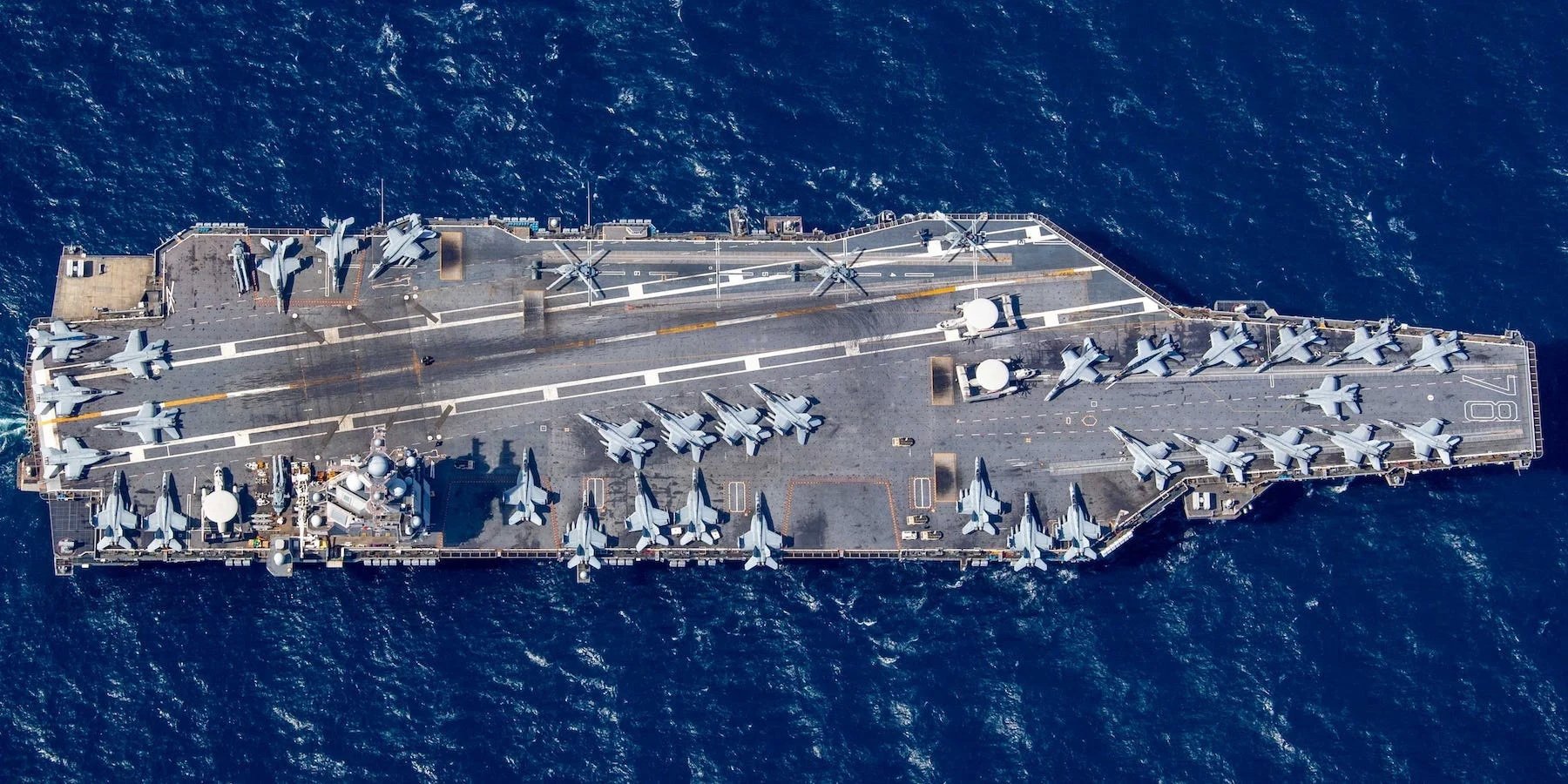
The powerful aircraft squadron on the USS Gerald R. Ford. Photo: Business Insider
Thanks to the new design, the Gerald Ford-class ships can carry a very powerful air wing. In the basic configuration, each Gerald Ford-class aircraft carrier will have two squadrons of 10 to 12 F-35Cs, two squadrons of 10 to 12 F/A-18E/F Super Hornets, five EA-18G Growler electronic attack aircraft, four E-2D Hawkeye early warning and control aircraft, and two C-2 Greyhound carrier-based transport aircraft or two V-22 Osprey tiltrotor helicopters.
In addition, the ship will carry eight MH-60S Seahawk utility helicopters and MQ-25 Stingray intelligence-gathering and refueling drones. These new UAVs can fly alongside F-35s or /A-18E/F Super Hornets for refueling and sensor operations, nearly doubling the combat radius of the fighters.
TECHNICAL SPECIFICATIONS OF THE AIRCRAFT CARRIER USS GERALD FORD (CVN-78)
| Size | 333 m long, 78 m wide, 76 m high |
| Payload | 100 thousand tons (full load) |
| Engine | 2 Bechtel A1B nuclear reactors |
| Maximum speed | 30 knots (56 km/h) |
| Trip Reserve | Unlimited (depending on food carried) |
| Human Resources | 4297 people (crew: 2600) |
| Radar/sensor | Aegis air defense system with AN/SPY-4 S-band active electronically scanned array radar. Air and surface target search radars, fire control radars, electronic warfare equipment, thermal decoys, anti-submarine sonar... 16 RIM-162 ESSM medium-range air defense missiles. |
| Weapon | 16 RIM-162 ESSM medium-range air defense missiles 42 RIM-116 short-range air defense missiles 3 Phalanx CIWS twin gun systems for extremely close-range interception missions 4 x 25mm Mk 38 guns 4 12.7 mm machine guns Laser cannon and electromagnetic cannon (optional) |
Ability carry plane | 90 aircraft, including F/A-18E/F Super Hornet, F-35C fighter jets; EA-18G Growler electronic warfare aircraft; C-2 Greyhound transport aircraft; E-2 Hawkeye early warning and control aircraft; SH-60 Seahawk helicopters, V-22 Osprey and many types of UAVs |
Source













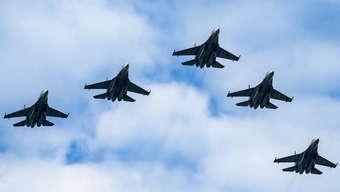
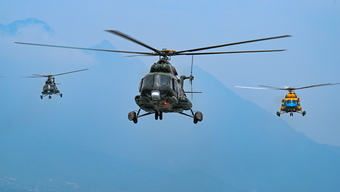

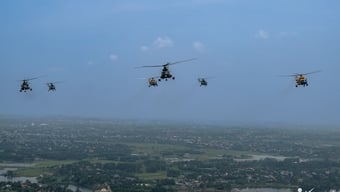


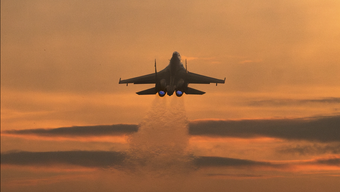













































































Comment (0)